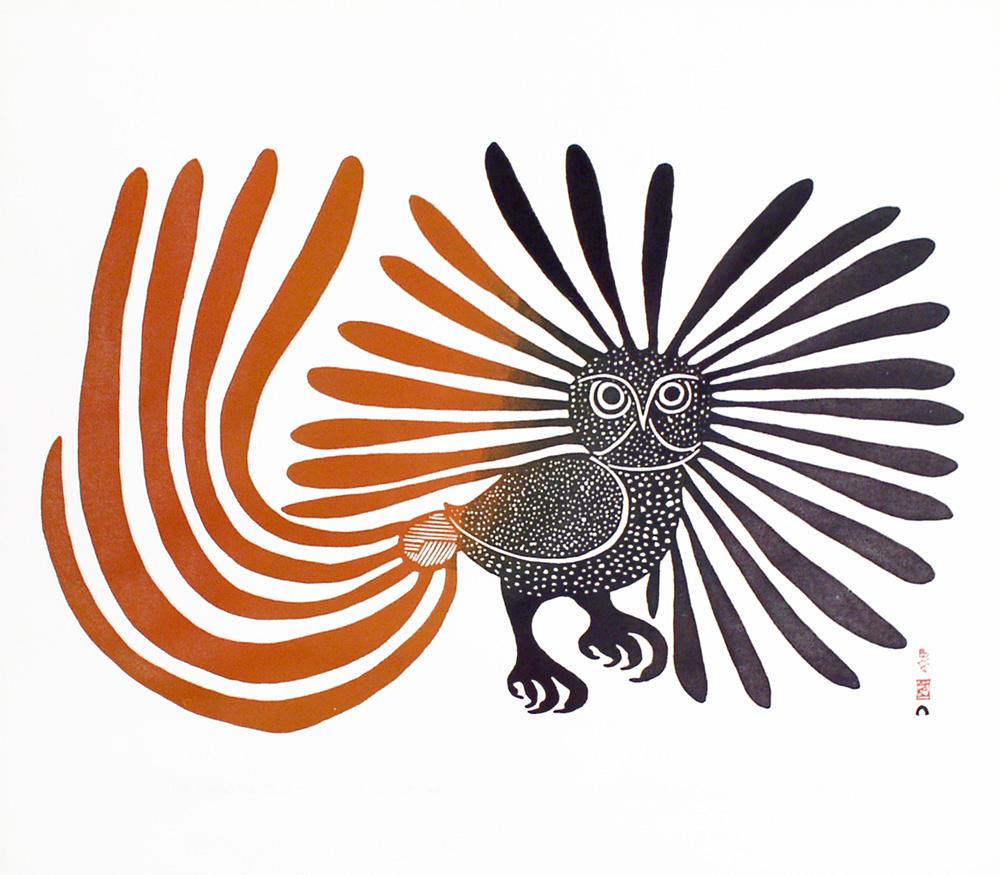Inuit Art Quarterly, a publication which folded two years ago, returned this winter thanks to a revived Inuit Art Foundation.
According to William Huffman, the IAF’s director of development and stakeholder relations, the magazine is just one project of the renewed foundation—which is the sole national body mandated to promote Inuit artists and art within Canada and internationally.
The group recently created a biannual residency prize for Inuit artists; it is in the process of finding an exhibition, office and event space in Toronto; and it is exploring the possibility of creating an official Venice Biennale project related to Inuit and Arctic art.
“There is a flourishing scene in the north,” Huffman says, noting that the new foundation is interested in a “broader stakeholdership” than its predecessor, aiming to incorporate “the performing arts and media arts happening in the north” rather than just sculpting and printmaking.
According to the CBC, the Inuit Art Foundation was originally founded in 1985 to “promote and market Inuit art worldwide.” The foundation began publishing Inuit Art Quarterly in 1986, and it also operated an Inuit-art shop in Ottawa for many years.
Both the magazine and shop ceased operations in early 2012 due to lack of funds. The Nunatsiaq News notes that a large part of the funding issue was an unfavourable review by Aboriginal Affairs and Northern Development, which said the foundation wasn’t reaching its goals.
In December 2012, however, talks began to revitalize the foundation. In July 2013, consultations were held at various locations in Nunavut.
This winter, the publication returned, helmed by Christine Lalonde, a curator on sabbatical from the National Gallery of Canada. Along with editorial board members Heather Igloliorte (an art historian), Mary Dailey Desmarais (an art historian and collector), and Teevi Mackay (an editor and researcher), Lalonde put together a winter issue focused on the iconic Inuit artist Kenojuak Ashevak, who died in 2013. The next issue is due out this spring.
Last month, the foundation also launched the Kenojuak Ashevak Memorial Fund, which will award $15,000 biannually to an artist of Inuit heritage in order to enable them to participate in a residency of their choice. The first such prize will be awarded in 2015.
“The demand, I suspect, will be for a north-to-north residency,” Huffman says. “The southern assumption is that most artists want to go south. But what we’re hearing is we’d like more north-to-north dialogue.”
The foundation has been revitalized in part through the efforts of Barry Appleton, a Toronto lawyer, collector and arts patron, as well as Toronto-based Inuit art dealer Pat Feheley and Ingo Hessel, head of the Inuit art department at Walker’s Auctions in Ottawa. All three are listed as “transitional directors” on the foundation website, with Appleton as chair, while current board members include artists Jimmy Manning (president), Okpik Pitseolak, Mathew Nuqingaq, Sammy Kudluk, David Ruben Piqtoukun and Helen Rose Kaloon.
Though the foundation website says it “undertakes advocacy on behalf of Inuit artists,” such advocacy does not, at this time, include campaigning for the Artist Resale Right, which CARFAC has pointed out could be a boon for Inuit artists.
Instead, Huffman says, the foundation is focused on other programs that would protect the interests of Inuit artists. Among them is a “revitalization of the igloo-tag program”—a system that certified Inuit art to distinguish it from overseas forgeries.
In July, the IAF also plans to participate in the cultural program of the international Inuit Circumpolar Conference.

 One of Kenojuak Ashevak's iconic owl prints. The Inuit artist is the namesake for a new residency prize created by the revitalized Inuit Art Foundation. Image: Courtesy Feheley Fine Arts.
One of Kenojuak Ashevak's iconic owl prints. The Inuit artist is the namesake for a new residency prize created by the revitalized Inuit Art Foundation. Image: Courtesy Feheley Fine Arts.







